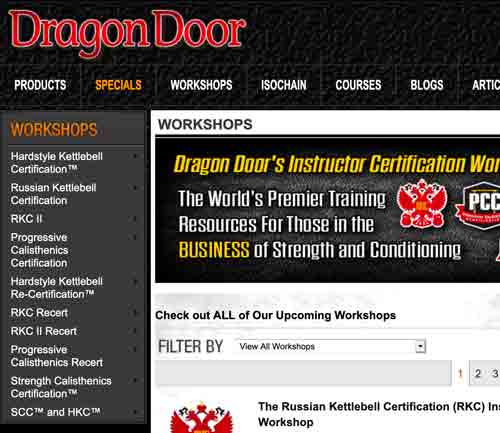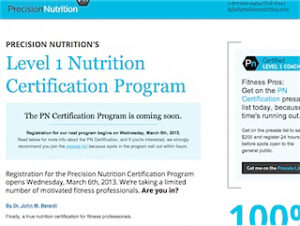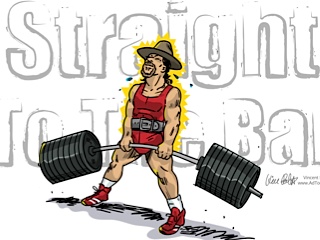
If you’re not using suspension straps in your workout program, you should be. Their portability and functionality make them ideal for home gyms and training while on the road. And while there are numerous variations of the suspension trainer, the most popular has become the TRX Pro from Fitness Anywhere. Setting up the TRX is super easy and its versatility is limitless. This article will break down the basics of setting up the suspension straps and incorporating the movements into your workout program.
WHAT IS TRX?
TRX was developed by Randy Hetrick, a former U.S. Navy SEAL, as a mobile training platform for soldiers on the front lines. The light-weight design of the TRX made it easy to transport, set-up, and break-down, so it could be taken practically anywhere soldiers were stationed.

There are several different kinds of suspension trainers, but none seem to have as large a mainstream following as TRX. In response to their customers’ demands, a lot of commercial gyms have purchased one or two of these yellow TRX straps for their personal trainers to use with clients and chances are, if your gym doesn’t have one, they will soon.
Of course, if your gym doesn’t have a set of straps, you can always bring your own and freak out the training staff with your mad skills.
SO WHY WOULD I USE IT?
The TRX (or any suspension trainer for that matter) is designed as a stand-alone piece of workout equipment. You shouldn’t need anything beyond the straps and a solid anchor point about 7 feet off the ground (squat racks, door jams and tree limbs all work great for this). By adjusting your sets, reps, tempo, range of motion, and rest periods you can design a program to train practically any facet of physical fitness. Endurance, strength, power and flexibility can all be trained using suspension straps.
Beyond portability, suspension straps also allows you to quickly adjust the difficulty of each exercise simply by changing the angle of your body in relation to the anchor point: If an exercise is too challenging, move your center of gravity closer to the vertical line under the anchor point and widen your base of support (“feet apart“); If an exercise is too easy, move your center of gravity away from the vertical line and make your base of support smaller (“feet together“).
HOW DO I USE IT?
Setting up the TRX is stupid simple: Just wrap it around any solid, stable object above your head. There are fancy, specially designed anchor points to do this, but I recommend just using one of the exposed beams in your basement or garage. Once you find an anchor point, drape the main strap over the object and latch the suspension trainer to itself. Do NOT attach the suspension trainer directly to your anchor point using the carabiner; the equipment is not designed to work that way. If you attach it correctly, the straps will look something like this:

Once your anchor point is secure, use the adjustment tabs and cam buckles to increase and decrease the length of the straps according to your needs. Always keep the handles centered on the main loop, and never ever let the handles slide back and forth while supporting weight: This causes friction and will degrade the equipment very quickly.

There are a bazillion exercises you can do with suspension straps, including stretches and balance/coordination drills, and my video below only demonstrates a handful of the more common movement patterns you might encounter. Don’t be afraid to experiment and get creative.
Squat / Pistol
These are pretty easy movement patterns, and everyone should be familiar with the proper form. Keep your hips back and really pop them on the way up. Just remember that this movement can cause more shear force on the knees than a traditional barbell squat due to increased quadriceps activation. Limit the range of motion if you have knee trouble, or make damn sure you’re activating those glutes!
Glute Bridge
A fantastic alternative to the squat discussed above, glute bridging eliminates most (if not all) quadriceps activation. But they do require a high degree of stability through the core, especially if you’re doing a single-leg variation. If you find your hamstrings firing more than your glutes during a bridge, place a resistance band around your knees as you perform the movement, and keep the band taught.
Supine Leg Curl
This is similar to the supine hip extension/leg cure performed with a stability ball, and should dynamically activate the knee flexors (mainly the biceps femoris, semitendinosus and semimembranosus. The popliteus, proximal gastrocnemius, distal sartorius and distal gracillis will also activate). Keep your glutes tight to maintain the proper straight line between your shoulders, hips and knees at all times.
Triple Extension / Sprints
Every sport requires its athletes from time to time to extend fully at the hips, knees and ankles simultaneously. This move is called the triple extension, and is the foundation for effective running, throwing and jumping mechanics. Oftentimes, olympic-style lifts are used to train this movement pattern; but the variations I demonstrate in the video will work just fine. Focus on minimizing ground contact time and getting your knees into your chest as quickly as possible between repetitions.
Plank / Pike / Mountain Climbers / Knee Tucks
It’s core work. It’s good for you. Do it.
Push-ups
This is my personal favorite. It activates all those little tiny stabilizer muscles you forgot about, and will bring even the biggest guy to his knees (literally). Maintain proper push-up form throughout the movement.
Row / 1-Arm Row
I cannot stress enough the importance of squeezing your shoulder blades together during these movements. It’s very easy to cheat and use your biceps to pull yourself up, but doing that will counterproductive to what we’re trying to accomplish here. Each repetition should initiate from low between the scapula: maybe T6 or T7 or T8. Initiate the movement too high and you involve the traps more than you should. “Start low, then go.”
Dips
Perhaps even more demanding than the push-ups, doing dips on a suspension trainer can quickly become torturous. I recommend them highly.
EXAMPLE PROGRAM
Below is an example strength program that incorporates TRX training. Notice how the program uses freeweights as the main lifts, and TRX as auxiliary lifts. This is because suspension training will heavily tax the central nervous system and will recruit a high number of muscle fibers (especially those tiny stabilizer muscles you totally forgot about).
Monday – Upper Body Pull
1. Bent-Over Row – 3 sets x 4 reps @ 85% 1RM
2. Thick-Bar Pull-ups – 3 x 8 @ bodyweight
3. TRX Row – 2 x 15 @ bodyweight
4. TRX 1-Arm Row – 2 x 15 @ bodyweight
Tuesday – Off
Wednesday – Lower Body
1. Box Squat – 3 x 4 @ 85%
2. Deadlift – 3×4 @ 85% 1RM
3. TRX Squat – 2 x 15 @ bodyweight
4. TRX Pistol – 2 x 15 @ bodyweight
5. TRX Leg Curl – 1 x 20 @ bodyweight
6. TRX Glute Bridge – 1 x 20 @ bodyweight
Thursday – Off
Friday – Upper Body Push
1. Incline Bench Press – 3 x 4 @ 85%
2. Dumbbell Flyes – 3 x 4 @ 85%
3. TRX Push-ups – 3 x 10 @ bodyweight
4. TRX Dips – 3 x 10 @ bodyweight
Saturday – Conditioning
1. Main Circuit (x3):
A. Sled Drag – 50 feet @ 75%
B. Farmers Walk – 50 feet @ 65%
C. Triple Extension – 8 reps
2. Core Work:
A. TRX Plank – 2 x 10 @ bodyweight
B. TRX Pike – 2 x 10 @ bodyweight
C. TRX Knee Tucks – 2 x 10 @ bodyweight
3. Finisher:
A. TRX Sprints – 6 sec x 8 reps
Sunday – Off
WRAP-UP
A suspension trainer is a remarkable tool and makes a great addition to any gym, whether it’s your basement, your living room, or the tree in your park. But before you go ahead and drop the cash for TRX straps, shop around and find the version you like best:
- Blast Straps – EliteFTS
- Elite Rings – Power Athletes, LLC
- Bandit’s Loop – Art of Strength, Inc.
- Jungle Gym – Perform Better
This is not an exhaustive list, and each has their pros and cons. You might even consider building your own straps from rock climbing gear or home improvement supplies. Check out the forums and Scott’s DIY Equipment Page for advice and ideas. You can also look at CrossFit Journal, Gymnastic Bodies and the Beast Skills Tutorial Page for even more info on various techniques and exercises you can do with suspension training.
Whatever you do, go out there and get it done!











0 Comments
Trackbacks/Pingbacks